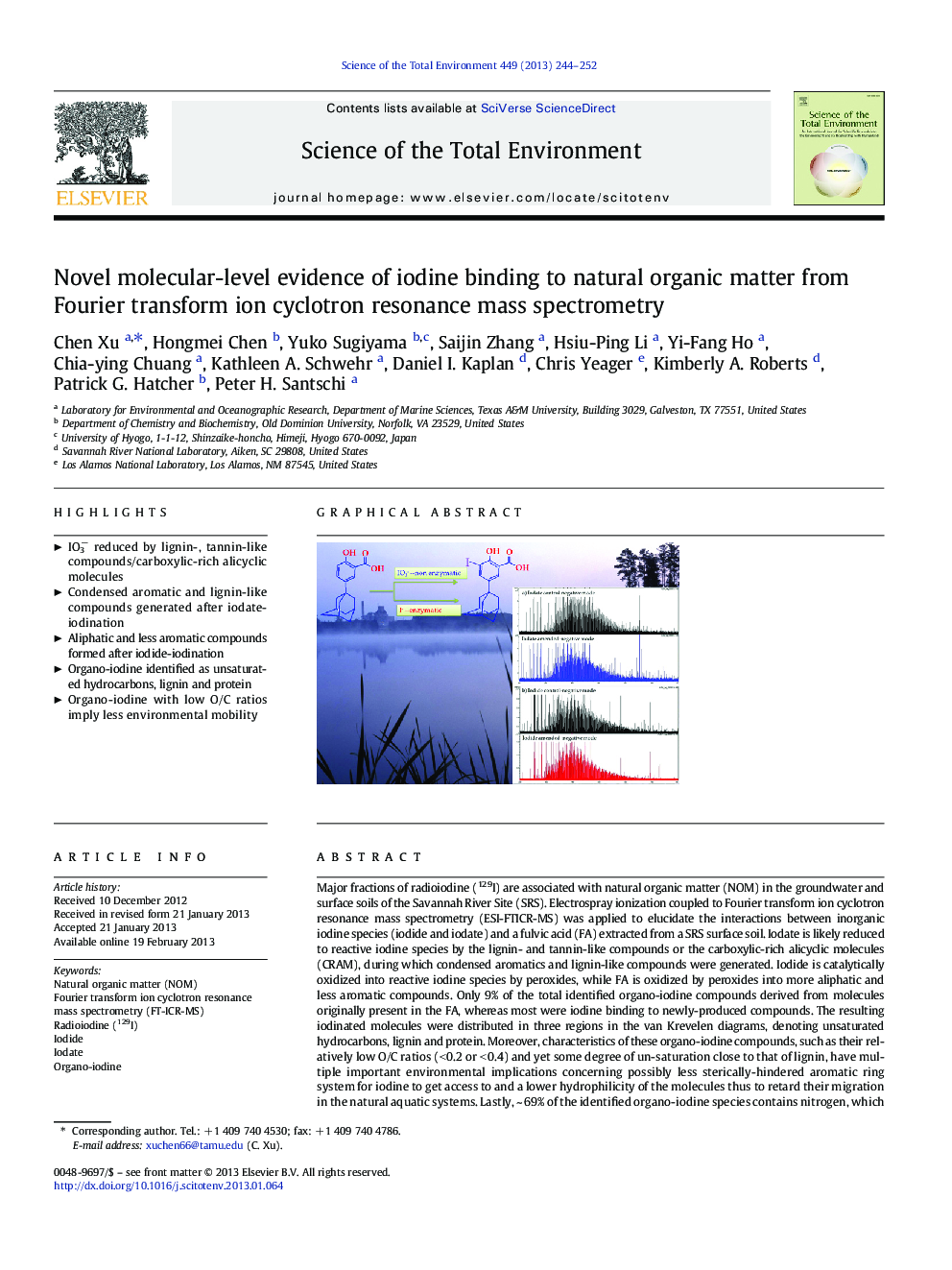| کد مقاله | کد نشریه | سال انتشار | مقاله انگلیسی | نسخه تمام متن |
|---|---|---|---|---|
| 4428862 | 1619805 | 2013 | 9 صفحه PDF | دانلود رایگان |

Major fractions of radioiodine (129I) are associated with natural organic matter (NOM) in the groundwater and surface soils of the Savannah River Site (SRS). Electrospray ionization coupled to Fourier transform ion cyclotron resonance mass spectrometry (ESI-FTICR-MS) was applied to elucidate the interactions between inorganic iodine species (iodide and iodate) and a fulvic acid (FA) extracted from a SRS surface soil. Iodate is likely reduced to reactive iodine species by the lignin- and tannin-like compounds or the carboxylic-rich alicyclic molecules (CRAM), during which condensed aromatics and lignin-like compounds were generated. Iodide is catalytically oxidized into reactive iodine species by peroxides, while FA is oxidized by peroxides into more aliphatic and less aromatic compounds. Only 9% of the total identified organo-iodine compounds derived from molecules originally present in the FA, whereas most were iodine binding to newly-produced compounds. The resulting iodinated molecules were distributed in three regions in the van Krevelen diagrams, denoting unsaturated hydrocarbons, lignin and protein. Moreover, characteristics of these organo-iodine compounds, such as their relatively low O/C ratios (< 0.2 or < 0.4) and yet some degree of un-saturation close to that of lignin, have multiple important environmental implications concerning possibly less sterically-hindered aromatic ring system for iodine to get access to and a lower hydrophilicity of the molecules thus to retard their migration in the natural aquatic systems. Lastly, ~ 69% of the identified organo-iodine species contains nitrogen, which is presumably present as NH2 or HNCOR groups and a ring-activating functionality to favor the electrophilic substitution. The ESI-FTICR-MS technique provides novel evidence to better understand the reactivity and scavenging properties of NOM towards radioiodine and possible influence of NOM on 129I migration.
Figure optionsDownload as PowerPoint slideHighlights
► IO3− reduced by lignin-, tannin-like compounds/carboxylic-rich alicyclic molecules
► Condensed aromatic and lignin-like compounds generated after iodate-iodination
► Aliphatic and less aromatic compounds formed after iodide-iodination
► Organo-iodine identified as unsaturated hydrocarbons, lignin and protein
► Organo-iodine with low O/C ratios imply less environmental mobility
Journal: Science of The Total Environment - Volume 449, 1 April 2013, Pages 244–252